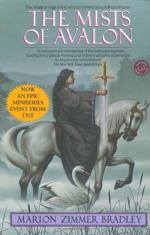|
This section contains 6,478 words (approx. 22 pages at 300 words per page) |

|
SOURCE: Eggenschwiler, David. “The Tragic and Comic Rhythms of Manfred.” Studies in Romanticism 13, no. 1 (winter 1974): 63-77.
In the following essay, Eggenschwiler discusses the aesthetic unity of Manfred while taking into account its logical inconsistencies.
Manfred is now generally recognized as an important transitional work in Byron's career: together with Childe Harold iii and iv, it has a sophistication of theme and character that Byron had not achieved before 1816. Yet the same critical commentary that has pointed out a richness of religious sources, dramatic traditions, and philosophical problems has also left the play seeming quite muddled. After acknowledging Byron's broad interests and rhetorical force, the reader may well consider the play a bag of ill-sorted delights. Even M. K. Joseph, who defends Byron “as a poet,” concludes that Manfred is a confused mixture of genres.1 And, in terms of logical consistency, the objection is valid. Consider, for example, the...
|
This section contains 6,478 words (approx. 22 pages at 300 words per page) |

|


